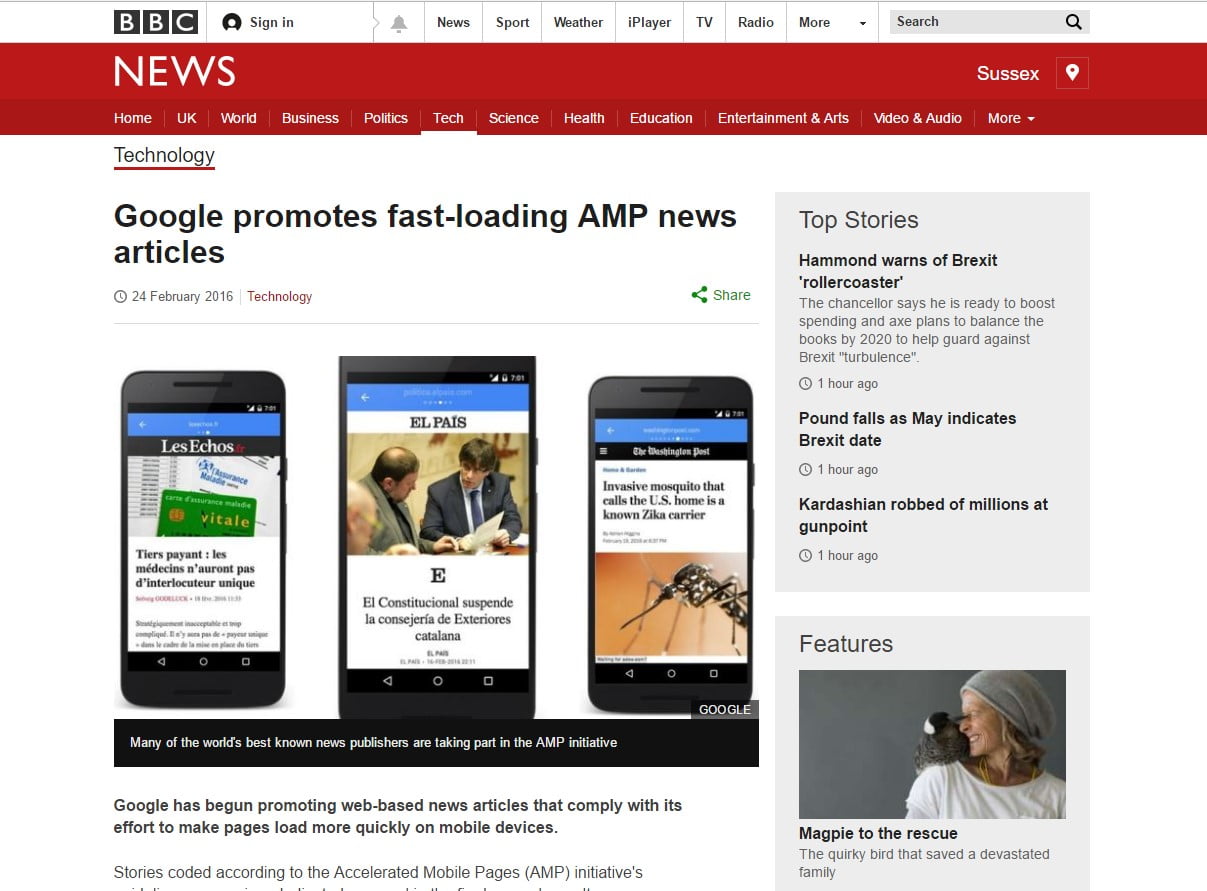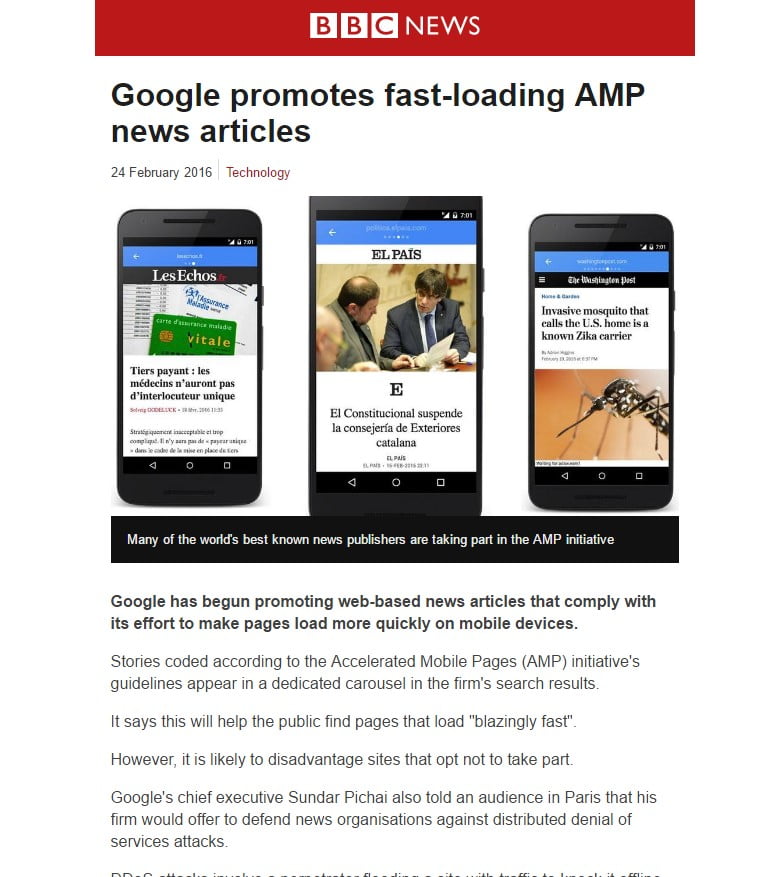Have you ever tried to load an article from search results on your mobile phone whilst relying on 3G or even 2G? It can often end in wildly shaking your phone in the air and ultimately being presented with a broken and nonfunctional half loaded site.
Accelerated Mobile Pages aim to improve this and help web articles load up to 10 times faster on mobiles. Added benefits are that the quicker loading increases battery life and that the user can simple swipe to the next article. To allow a page to load instantly, AMP restricts what you can do with the web page. It loads a stripped down version of a page favouring function over form. AMP pages look like a very minimal version of normal web pages.
How does it work?
Essentially, another version of each web page is created. In the code for your website, search engines are told of this other version, so they can then store it in their records for later on when someone performs a relevant search on a mobile phone. On the AMP page it’s HTML code that restricts you to basic text and images.
Do I need it?
If you’re running a simple 5 page website then you probably don’t. However if you have a blog or news section on your site, this is where AMP is designed to shine and would be worth looking into.
AMP is not favoured by all web developers, but with Google behind it we can be fairly certain it will be a big player for the foreseeable future. Google prioritises AMP pages on mobile search results, so it could make sense for you to get it setup.





